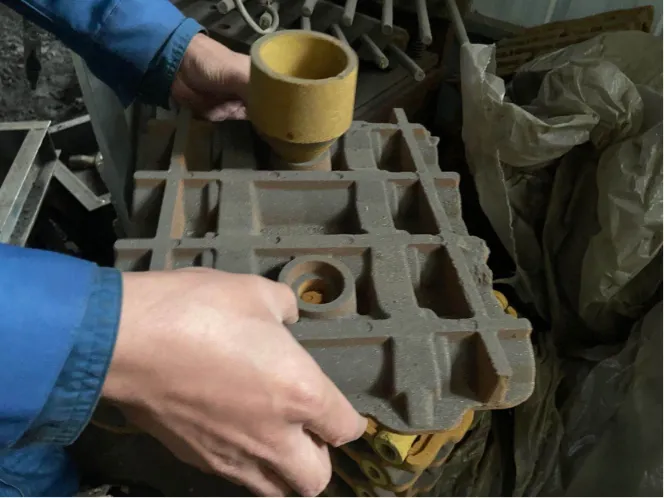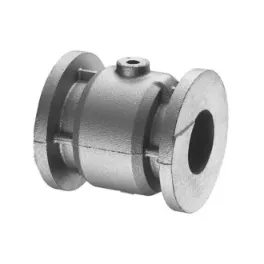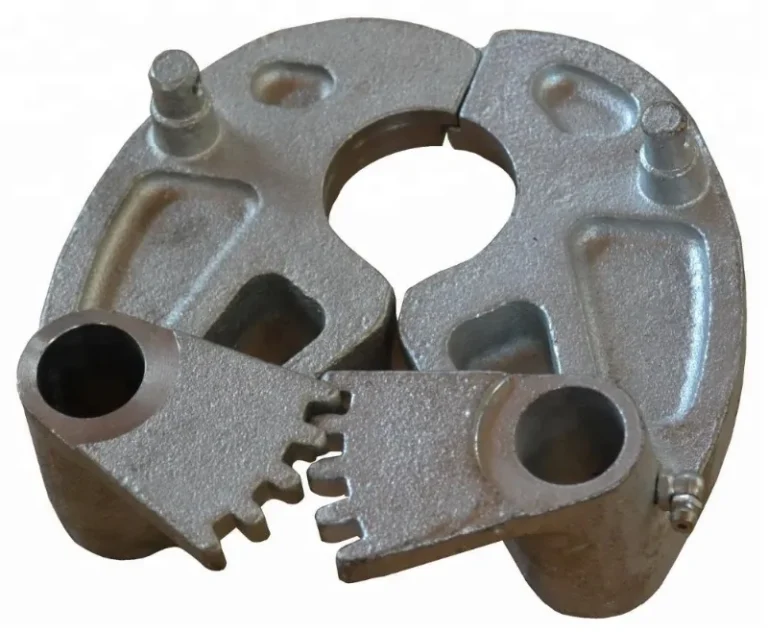
Introduction
Farm machines face huge loads, constant shaking, and wild outdoor weather. Ductile iron, famous for its tough build and solid power, now serves as a trusty pick for building main frames and vital parts. This piece digs into how ductile iron castings help boost work output, long life, and money savings for farm gear.
Ductile Iron in Modern Manufacturing
What Makes Ductile Iron Different from Gray Iron
Ductile iron shows round graphite bits that add extra toughness and let it bend a little before snapping. Gray iron carries flat graphite flakes, so it breaks easy under quick hits. Farmers bump over bumpy land every day. That gap lets ductile iron take shocks way better on the job, say when a tractor smacks a buried stone.
Mechanical Properties That Matter Most
Pull strength often tops 65,000 psi in usual types, teamed with stretch up to 12 percent. It fights wear out real well, handling millions of load twists without giving up. Picture a combine harvester jumping over lumpy dirt all day long. These features keep frames steady through many tough seasons, cutting surprise stops.
Material Grades for Structural Castings
Types like ASTM A536 65-45-12 give nice flex for bendy plans, but 80-55-06 brings more power for big weights. Workers choose by the machine’s size and daily grind. A small tweak in heat can fix hardness just right. Such choices let folks fit castings to certain plows or seeders without messing up the making steps.
Why Agricultural Machinery Frames Require Ductile Iron
Handling Heavy Loads and Field Stress
Frames hold up engines, axles, and add ons that tip the scales at tons. Ductile iron soaks up shakes from hard ground without twisting. Imagine a tiller dragging through packed soil; the stuff bends a touch yet holds shape. This firmness stops line up troubles that might hurt hydraulics or wheels down the road.
Resistance to Fatigue and Fracture
Back and forth loads from plowing or gathering pile up stress over many uses. The strong wear limit of ductile iron shoves break points way off, often past 10 million twists in checks. Cracks hardly spread because of those ball like graphite dots. Gear runs longer hours with less fear of quick splits in the frame.
Improved Longevity and Service Life
Castings hang on for decades in dirty soils or damp spots, fighting rust better than steel sometimes. Less swaps mean smaller bills for farmers. One old tractor frame could outlast several paint coats. This toughness lifts sell back worth and keeps work flowing smooth year in, year out.

The Casting Process for Agricultural Frames
BaoQi runs tight controlled shaping and melting setups to turn out ductile iron pieces with even mix and few flaws. This way promises steady work in big, tricky frame builds.
Molding and Melting Control
Melting goes in induction ovens at spot on heats near 2,600 degrees Fahrenheit. Magnesium drops in to round out graphite just so. Too hot, and traits go soft; too cold, balls shape wrong. Steady watch gives parts that hit marks every pour, key for large frames with different thicknesses.
Gating and Feeding System Design
Gates lead hot metal easy to skip swirls and air bubbles. Risers toss extra stuff to fat spots as they cool and shrink. Clever plans drop holes to under one percent. A smart gate spot can save hours on fix up, speeding the whole batch.
Post Casting Treatments
Heat fixes like annealing ease strains and smooth inner build. Shot blasting wipes surfaces and toughens them against scrapes. Some bits get austempering for more grit. These moves ready castings for drilling spots or welding holders without chipping or breaking in put together time.
Design Considerations for Frame Castings
Integrating Strength with Weight Optimization
Computer load checks thin walls where safe, dropping pounds yet keeping stiff. Ductile iron’s power to weight mix stands out here. Lighter frames cut fuel use on tractors. Builders sometimes toss in ribs for extra hold, keeping total weight low for quick turns in small fields.
Tolerances and Dimensional Accuracy
Patterns come from CNC cutting for close fits, often plus or minus 0.02 inches. Core boxes line up perfect to stop slips. Right sizes mean bolts fit first go in assembly. Little changes in sand packing help nail those spots batch after batch.
Machining and Finishing Needs
The stuff cuts smooth with normal tools, letting deep holes for pins or threads for bolts. Surface smooth hits Ra 3.2 easy after grinding. Hydraulic bits sit tight, cutting leaks. Good cutting hurry production, pushing frames to paint quicker.
Quality Control and Testing Methods
At BaoQi’s casting shop, every ductile iron frame gets size checks, hardness pokes, and no break scans to promise solid build.
Non Destructive Evaluation (NDE)
Sound waves hunt inner gaps, and magnet powder shows surface breaks under special light. These ways grab flaws soon, before cutting wastes effort. A fast scan might save a whole part from trash, holding quality up and costs down.
Dimensional and Mechanical Testing
Measuring machines check every key size. Pull tests yank samples to break, eyeing power and bend. Charpy hits test toughness in cold. Numbers must match ASTM rules, or the group gets looked at again. This strictness makes sure frames take real beatings.
Process Traceability
Chemical checks log carbon, silicon, and mix levels for each melt. Oven notes track time and heat. Barcodes tag parts through steps. If a field problem pops years later, tracking back finds the reason fast, bettering next makes.
Conclusion
Ductile iron castings prove a top fix for farm machine frames, mixing muscle, lasting power, and smart spending. With better shaping, checking, and step watch, makers can make sure each piece works trusty in rough spots. By keep tweaking its casting tricks and quality handle, BaoQi helps world OEMs build tougher, longer hold farm gear for today’s farming world.
FAQ
Q: What is the main advantage of ductile iron over steel for frames?
A: It gives close power but better shake soak and easy shaping for tricky forms, usually at less cost.
Q: How long do ductile iron frames typically last in the field?
A: With good care, 20 to 30 years or more, based on use and rust guard.
Q: Can ductile iron be welded if repairs are needed?
A: Yes, with warm up and right filler, though castings plan to cut repair wants.
Q: What grade is best for heavy tractor frames?
A: ASTM 80-55-06 for big loads, mixing power and some bend.
Q: Are there eco-friendly options in ductile iron production?
A: Yes, lots of shops use old stuff and power smart melting to lower nature hit.








